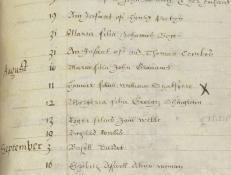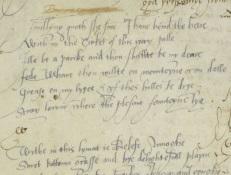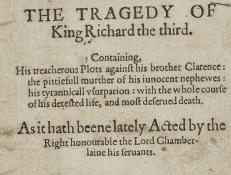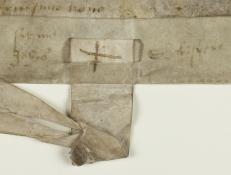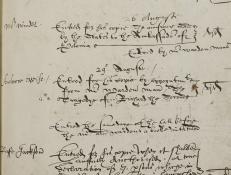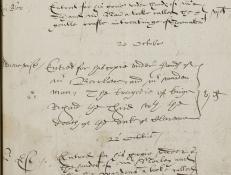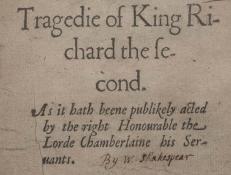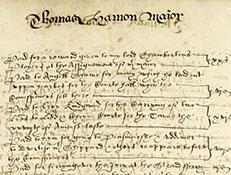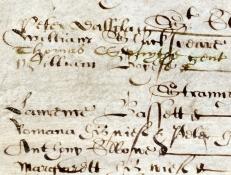Shakespeare Documented is still growing! Currently, two thirds of the descriptions and 98% of the images are available in the resource. Descriptive text will continue to be added, updated and expanded. Visit our About page to learn more about the project scope.
EXPLORE THE DOCUMENTS BY CATEGORY
SHAKESPEARE DOCUMENTED IS STILL GROWING
Descriptive content and transcriptions will continue to be added, updated and expanded. Check back for regular updates!
Filter the documents by tag(s)
November 29, 1596
The enrolled entry known to Shakespeare scholars as the “Langley writ” was recorded in the Court of King’s Bench between October 29, 1596 and January 24, 1597. The writ constitutes presumptive evidence that William Shakespeare, formerly of St.
August 11, 1596
Hamnet, William and Anne Shakespeare’s only son, was buried on August 11, 1596, according to the Holy Trinity Church parish register. Next to the entry, an “X” added by a later hand highlights its significance. He was eleven years old.
ca. 1596
Henry Colling, who attended Cambridge but left without a degree in the early 1580s, transcribed two stanzas of Venus and Adonis into this small folio of historical tracts (lines 229&ndas
1597
Richard III was first printed in 1597, and the title page enumerates the various exploits to be found within, including Richard’s “treacherous Plots,” the “pittiefull murther of his innocent nephews,” his “tyrannicall vsurpation,” and of course h
January 26, 1597
On January 29, 1597 John Shakespeare sold his neighbor, George Badger, a strip of land on the north-western boundary of John’s Henley Street property (now known as the Birthplace). The conveyance shown here is in Latin.
August 29, 1597
Richard II was entered into Liber C of the Stationers' Company on August 29, 1597. The title as entered reads "The Tragedye of Richard the Second".
October 20, 1597
Richard III was entered into Liber C of the Stationers' Company on October 20, 1597.
1597
Shakespeare’s Richard II made its debut in print in 1597, approximately two years after the play’s original performance on stage.
ca. August 27, 1597
This document, part of the Rye Chamberlain’s Accounts, includes an August 1597 entry for a payment of 20 shillings to Shakespeare’s company, the Lord Chamberlain’s Men.
November 15, 1597
Lay subsidies were a type of tax based on personal wealth. In London, the collection of subsidies was managed at the local level of ward and parish. Each collection typically generated one lay subsidy roll and one default roll for each ward.

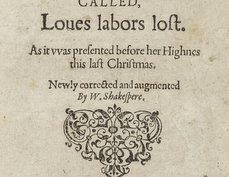
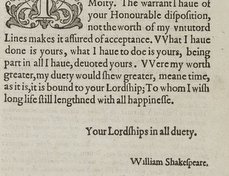
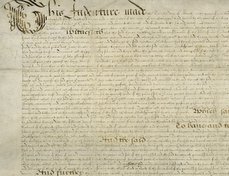

![The Langley writ [1], thumbnail detail](https://shakespearedocumented.folger.edu/sites/default/files/styles/document_thumbnail/public/document-thumbnails/KB29-234%20%281%29_thumbnail%20detail.jpg?itok=FAoIJUL_)
